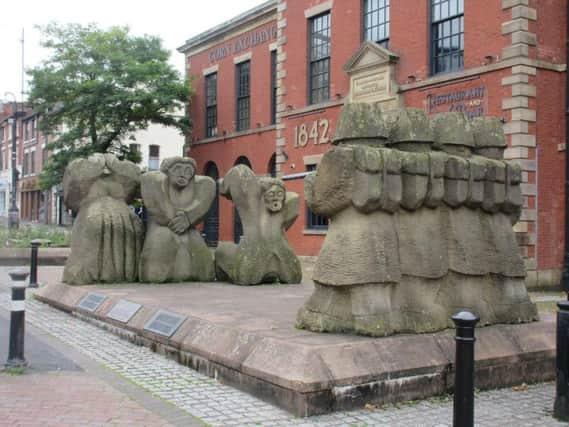‘Justifiable homicide’ verdicts over Preston protest killings


On the third Tuesday of August 1842 Inquests were held in the Court House before coroner Richard Palmer following the deaths of George Sowerbutts, aged 19, and Bernard MacNamara, aged 17, on the previous Saturday in Lune Street.
The first Inquest was relative to the death of George Sowerbutts and it was explained that the introduction of machinery that practically did away with hand loom weaving and constant reduction in wages had made many a cotton worker fearful for their future. Consequently, the so called Chartist riots had been taking place all over Lancashire and that week Preston had became the focus of attention.
Advertisement
Hide AdAdvertisement
Hide AdOperatives from nearby towns having paraded the streets in a defiant attitude.
Witnesses testified that on the previous day an unruly mob had visited various factories and displaying violent behaviour had forced the workers to turn out. Amongst those called to testify was Captain Woodford, chief constable of the county police force, who stated that on the Saturday morning before 8 o’clock he went to the Bull Inn where he met the Mayor Samuel Horrocks, along with other magistrates and a military detachment of the 72nd Highlanders. He explained how they had confronted the mob on Fishergate and that the military and a body of constables instructed the rioters to disperse.
According to him, some of the mob began throwing stones as they were guided down Lune Street and when the military and police got close to the Corn Exchange they were furiously pelted with stones. The Mayor was then struck upon the hand with a stone as he proceeded to read the Riot Act. Four or five minutes then elapsed during which the troops were under a shower of missiles and after this the Mayor gave the order to fire as the troops faced the mob near the Corn Exchange. Twenty shots in all were fired, not in volley but by single firing and he saw several people fall, particularly one rioter who stood in the middle of the street in the act of hurling a stone. The firing had stopped the mob in their tracks and they began to disperse.
Surgeon Thomas Dixon testified that he had attended to Sowerbutts who had been hit in the chest with a musket ball that had broken three of his ribs as it passed through his body. In an insensible state and having lost a lot of blood he died on the Sunday evening.
Advertisement
Hide AdAdvertisement
Hide AdThe coroner then explained the law and the duty of the magistrates relative to riots. The jury after a brief consultation returned a verdict of ‘Justifiable Homicide’.
The inquest on MacNamara followed a similar pattern and his sister Bridget told the gathering he had gone off to Mr. Oxendale’s Mill early that fateful day. He was brought home with a wound to his belly that was bleeding continuously. Despite medical attention he had died on the Monday afternoon. Once again a verdict of ‘Justifiable Homicide’ was recorded.
It was noted that other rioters taken to the House of Recovery were William Lancaster, aged 25, a resident of Nugent Street, who had been shot in the chest; James Robert, a 21 year old weaver, of Savoy Street, shot in the fore arm; Bryan Hodgson, aged 36, a shoemaker, of St. Paul’s Square, wounded in the lower part of the back; John Mercer, aged 27, a hand-loom weaver, of Ribbleton Lane, who had been shot through the chest; and Lawrence Pilling, aged 21, a weaver of Moss Rose Street, who had to have a leg amputated after a ball entered his leg below the knee, smashing the bone in a frightful manner.
Within the fortnight it was reported that two more of the rioters were dead. William Lancaster succumbing to his chest injuries after six days and John Mercer, the first to be shot, lingering for a further four days before expiring. Inquests into their deaths returned similar verdicts to those given at the former inquests.
Advertisement
Hide AdAdvertisement
Hide AdOutside the public house nowadays simply called ‘1842’ is a statue that reflects the events of Saturday August 13, 1842. Fittingly, the Preston Martyrs memorial was unveiled in August 1992 to mark the 150th anniversary of the tragic day, having been designed by sculptor Gordon Young.